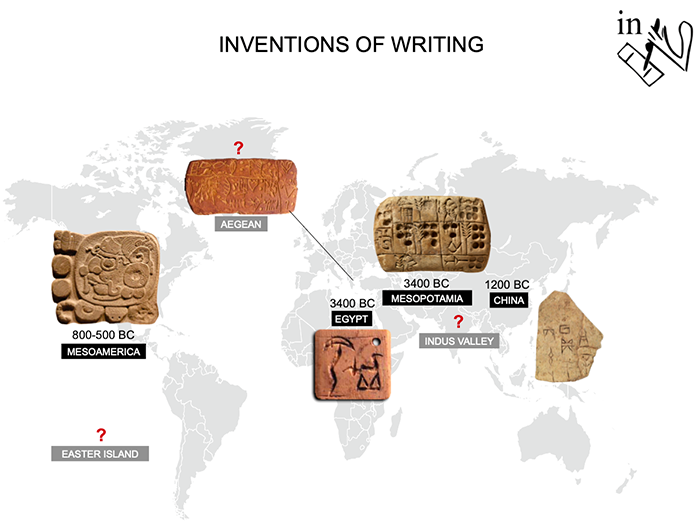First, INSCRIBE considers the original inventions, all of which are image-based, from Mesopotamia, Egypt, Mesoamerica and China, and other debated cases, such as the Rongorongo script of Easter Island and the Indus Valley script. The objective is to explain their invention in terms of visual cognition (why are signs shaped as they are?), archaeological setting (what are the contextual preconditions, why does writing emerge when it does, and only four times in history?), application of use (what are its initial purposes?), and language notation (what are the paths to registering sound?).
Second, INSCRIBE explores the earliest scripts in Europe from the second millennium BC Aegean, whose initial phase is highly 'iconic' (broadly speaking, picture-based). The three undeciphered Aegean scripts (Cretan Hieroglyphic, Linear A and Cypro-Minoan) will be analyzed for the first time from a multistranded perspective that will shed unprecedented light on their creation and development. We want to analyze the relationship between these scripts and to apply a multi-stepped (and already successfully piloted) decipherment strategy.
Third, INSCRIBE goes beyond the traditional standards applied to the catalogues of inscriptions by producing the first complete digital corpus of all three Aegean undeciphered scripts, with 3D interactive models accompanied by a multidimensional interface tagging inscriptions, types of inscribed objects, provenance, archaeological contexts and functions.
This project has received funding from the European Research Council (ERC) under the European Union’s Horizon 2020 research and innovation programme (grant agreement No 771127).


